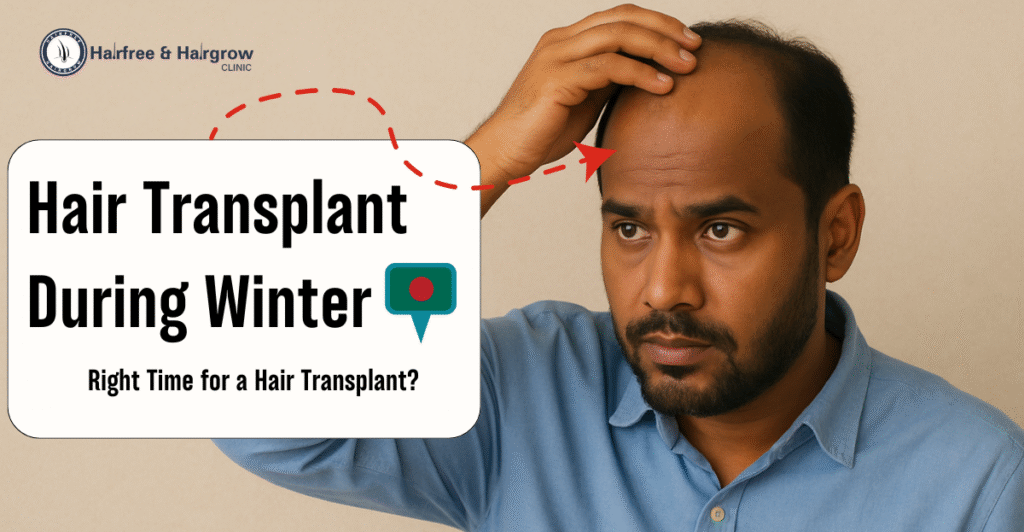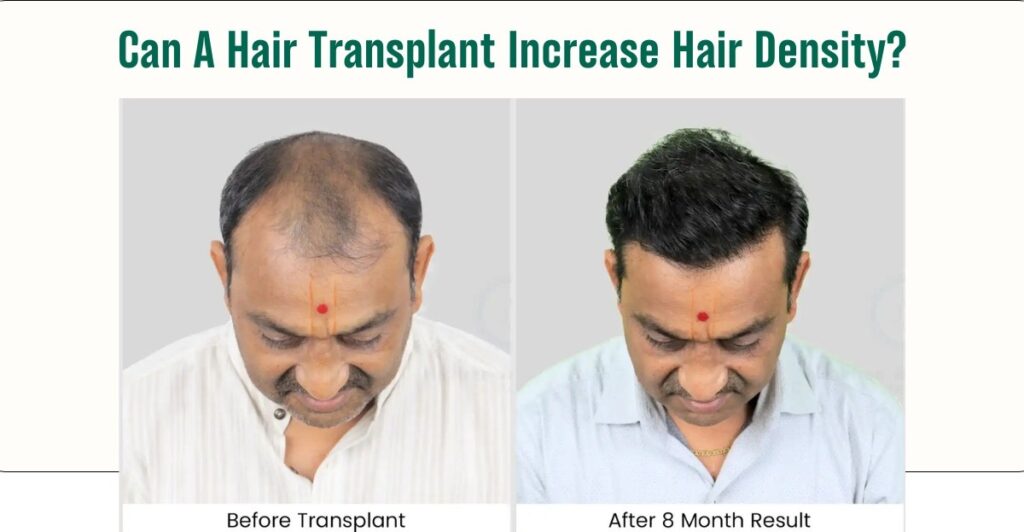Hair transplants are one of the most popular solutions for people dealing with baldness or thinning hair. However, many individuals often wonder, “When does transplanted hair start to grow?”
This is a very common question that pops up for people considering this procedure. It’s important to understand that hair transplant results don’t appear overnight—it’s a gradual process that takes time.
So, let’s take a closer look at the timeline of hair growth after a transplant and the factors that influence it.
Table of Contents
Understanding the Hair Growth Cycle
To comprehend the growth process, you first need to understand the three main stages of hair growth:
- Anagen Phase: This is the active growth phase where the hair follicles produce new cells, causing the hair to grow longer. It lasts anywhere from 2-6 years.
- Catagen Phase: This is a short transitional phase (2-3 weeks) when the hair growth stops, and the hair follicle begins to shrink.
- Telogen Phase: The resting phase where the hair follicle is dormant and eventually falls out. This phase lasts about 2-3 months.
When you undergo a hair transplant, the transplanted hair grafts also go through these same phases. After the procedure, the implanted hair enters a shedding phase where the hair falls out. But don’t worry! This is a normal and expected part of the process before the new hair starts to grow.

Immediate Aftermath of the Transplant
So, what should you expect immediately after your hair transplant?
In the first few days after the surgery, you might experience redness, swelling, or mild pain on your scalp. This is due to the tiny incisions made during the procedure. During this period, you’ll need to be very careful with your scalp to ensure that the grafts are not disturbed. Here are some common things to keep in mind during the hair growth timeline:
- Avoid washing your hair for the first few days.
- Be gentle when touching or cleaning your scalp.
- Follow your surgeon’s post-operative care instructions carefully.
When Does New Hair Start to Grow?
The big question is, when do transplanted hair start to grow? Typically, you’ll notice the following timeline:
- 0-3 Weeks: After your transplant, the new hair shafts will grow for a few weeks and then enter the shedding phase. This is called “shock loss”, where the hair sheds due to the stress of the transplant surgery. It’s completely normal and a sign that your scalp has accepted the new hair follicles.
- 3-4 Months: During this time, your hair follicles are preparing for new growth. Small hair starts to sprout from the follicles, but the hair might be thin and soft.
- 6-9 Months: By now, around 50-60% of your new hair will be visible. The hair becomes thicker, and you’ll start seeing a fuller hairline.
- 9-12 Months: The final results begin to show! At this point, your hair should be fully grown, giving you a natural appearance. It can sometimes take up to 18 months for certain people.
Understanding the Shedding Phase
As mentioned, many patients panic when they notice post-transplant hair shedding. The shedding phase is a natural part of the process. After about 2-3 weeks, the transplanted hair sheds due to the shock caused by the surgery. This phase can last for up to 3 months, after which the hair starts to grow back gradually.
Remember, shedding doesn’t mean the procedure has failed. Only the hair shaft falls out, not the root. The root is safely secured and will produce new hair within a few months.
Factors Affecting Hair Growth After Transplant
Several factors can influence when transplanted hair starts to grow and the overall success of your hair transplant:
- Type and Quality of Hair: The thickness, color, and texture of your hair impact how dense the results will look.
- Surgeon’s Skill and Experience: A qualified and experienced surgeon will ensure optimal graft placement and success.
- Post-Surgery Care: How you care for your scalp post-transplant significantly affects the outcome. Avoid strenuous activities, wear loose hats, and don’t pick at the grafts.
- Overall Health: Nutritional deficiencies, underlying health conditions, and habits like smoking can slow down hair growth.
Maximising Hair Growth Results
If you want to maximize your hair growth timeline, follow these tips:
- Stick to a Healthy Diet: Eat a balanced diet rich in proteins, vitamins, and minerals to nourish your hair.
- Use Recommended Products: Your surgeon might suggest using minoxidil or finasteride to promote hair growth and preserve existing hair.
- Follow Aftercare Instructions: Strictly adhere to your surgeon’s post-op care instructions. Proper aftercare is critical for long-term results.
- Be Gentle with Your Scalp: Avoid direct sunlight, harsh chemicals, or excessive scratching.
- Consider Supplements: Vitamins like Biotin and Zinc can support hair health and growth.
Patient Testimonials and Experiences
Many patients have shared their experiences and confirmed that patience is key. Initially, they were worried when they saw shedding or when their hair wasn’t growing as expected. However, after 6-12 months, they started to notice substantial growth and a natural appearance.
This timeline can vary slightly depending on individual cases, but in the end, most people report positive results if they stay patient and follow the aftercare steps.
Conclusion
To sum it up, when transplanted hair starts to grow varies from person to person, but on average, you can expect to see significant results within 9-12 months. The hair transplant procedure is a long journey that requires patience and proper care.
Just remember, the initial post-transplant hair shedding is a natural step in the process, so don’t be disheartened. Take good care of your scalp, follow your surgeon’s advice, and look forward to your new hair!
FAQ
It usually starts to grow around 3-4 months after the transplant, but full results are visible in 9-12 months.
Yes, it is completely normal. This is called shock loss and is a part of the natural hair growth cycle.
Factors like the type of hair, surgeon’s skill, post-surgery care, and your overall health can impact growth.
Most people see 50-60% results by 6 months, with complete results visible in 9-12 months.

Written By
Medical Officer & Hair Transplant Surgeon
Dr. Nazmin Sultana Nipa is a distinguished hair transplant doctor in Bangladesh, known for her advanced skills in hair restoration. As a Medical Officer and Hair Transplant Surgeon, Dr. Nipa combines her extensive experience in the field with a focus on transparency and patient-centered care.
Disclaimer
We’ve made all possible efforts to ensure that the information provided here is accurate, up-to-date and complete, however, it should not be treated as a substitute for professional medical advice, diagnosis or treatment. See Detailed Disclaimers Here.



